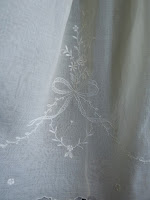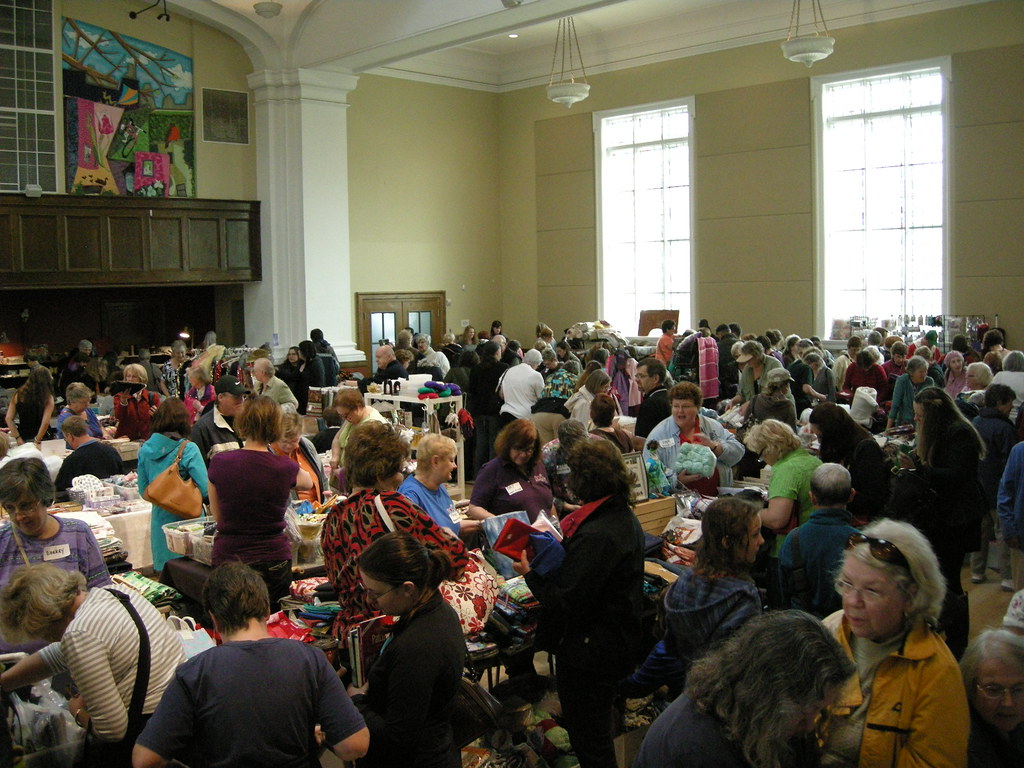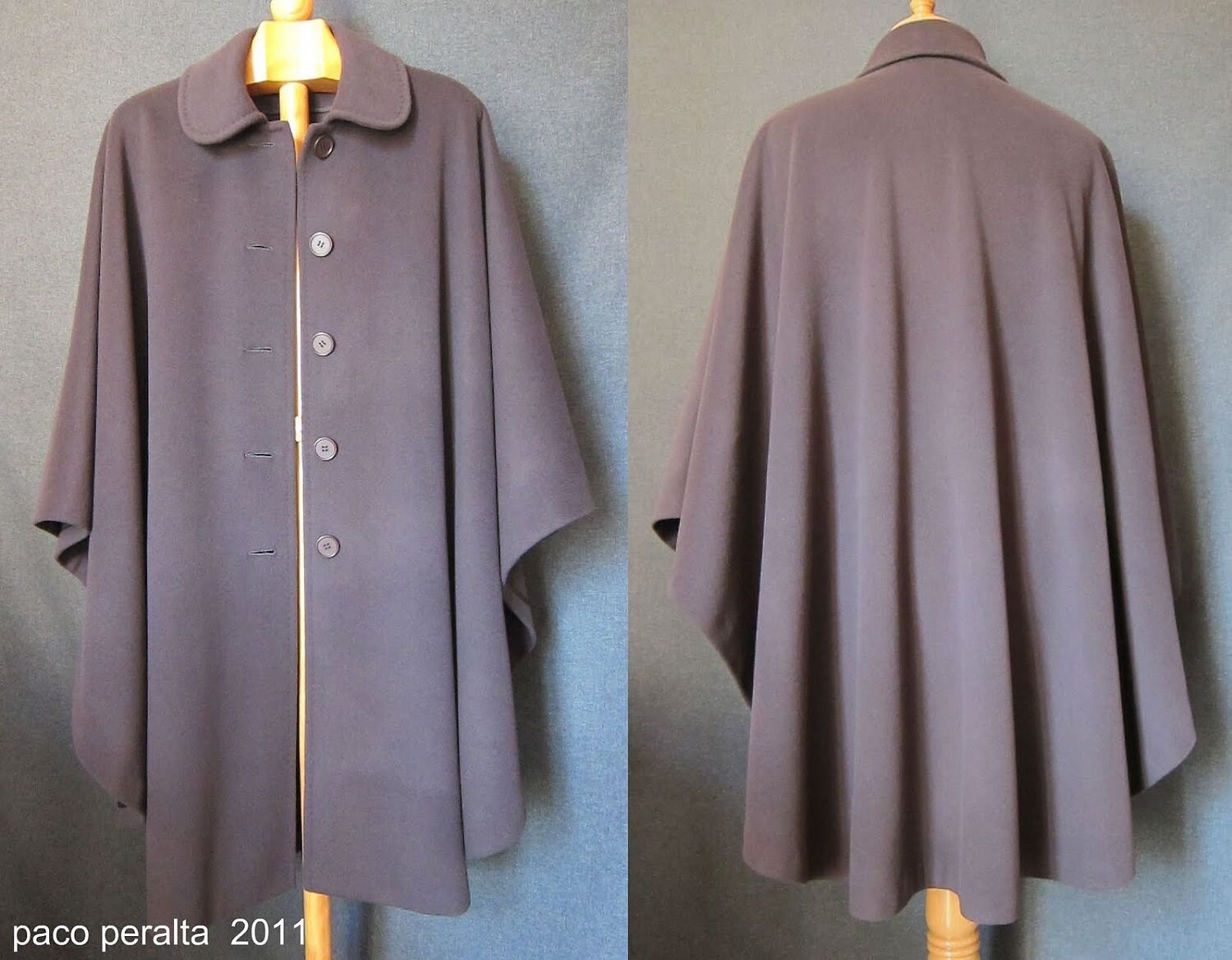I'd like to say that I've been too busy sewing to blog, but it would be far from the truth. However, I have just finished a project and I'm so pleased with it that I am presenting it publicly to you, even before I give it to its intended recipient for Christmas.

It's a shearling trapper's hat.

I had a skin of lamb shearling and a finished hat to use as a model, as well as all the information that could be gleaned from the pictures of the various versions on the www by
UGG, among other vendors. They're expensive, these hats!
So I made a pattern, and then I made a "muslin" using some leftover very thick Berber style fleece fabric, and then I made a hat.
And because of some online interest when I posted an in-progress shot of this hat on Facebook, let me try to give you the pattern so you can make your own.
I tried to take the photos of the pattern pieces from straight above, but if I messed up, you can use the 1" square grid of my cutting board for guidance. (Click on any picture to make it a lot bigger.)
Sizing
This is a VERY roomy hat, if you make the pattern to the dimensions below. I made it without the recipient available for measuring or try-ons. It is too big so I am spending part of Christmas Day taking it in. For your info, his head measures 23.75” (60cm) and I am reducing about 1.25" (3cm) of width through the seam at CB, tapering back to the original seam line smoothly over the top of the hat.
Definitely the easiest place to take it in (or let it out if you have a truly gigantic head) is the seam at the centre top of the crown. Just remember that if you do this you should divide the amount to take in by 4 and reduce the width of each crown piece by that amount (that is, my 3cm reduction would translate to a narrowing of .75cm on each seam allowance for a total of 1.5cm at CB and the same at CF). I am taking it in at CB only and leaving the front alone because I am not taking the entire hat apart! Of course you will also have to change the length of the ear flap piece at CB and perhaps the brim at CF (though here you can fudge) to correspond.
The Pattern
 |
| Crown - Centre piece - cut 2 |
Centre Crown - This piece started life as a rectangle measuring 7.25cm (2 7/8") by 31cm (12 1/4"). As you can see, I added some shaping by slashing it in 4 places and spreading to add 1cm (3/8") at each point.
You need two of these.
 |
| Crown - Side piece - cut 2 |
Side Crown - To complete the crown of the hat, cut two of these side pieces. The important measurements are the base of 19cm (7 1/2"), the height of 11cm (4 3/8") and the outer curved seam line of 31cm (12 1/4") which is identical to the length of the concave edge of the centre piece of the crown. Curve the ends of the base up slightly as you can see in my photo.
By the way the seam allowances shown in the photos are 1cm (3/8") . No seam allowances are needed along the lower edge of the ear flap piece or the outer edge of the brim if you are using shearling leather.
 |
| Ear Flaps - cut 1 |
Lower Back/Ear Flaps - This piece measures 46cm (18 1/8") along the top edge. The flap is 20cm (7 7/8") deep at the longest point (measured from the seam line) and 7.75cm (3") deep at CB. The upper edge is very slightly curved by slashing in two places and overlapping the tissue by approximately .6cm (1/4"). You could overlap more, in which case you might not need the elastic I added at the lower CB to cinch the hat in at the back neck.
 |
| Brim - cut 1 |
Brim - Finally, you need a brim. The base should be the difference between the complete bottom circumference of the crown, minus the top length of the ear flap piece. In other words, it should completely fill the gap at the front of the hat from ear flap to ear flap. Add a bit for insurance. As you will read below, I had to do some fudging to fill in a little gap. The height of the brim doesn't matter so much. Mine is about the same as the side crown pieces.
Sewing Tips
I referred to an article in Threads 104 (January 2003), p.42, on sewing shearling.
I used ordinary thread, and had the best luck with a jeans needle. Lighter needles caused skipped stitches.
Mostly I used a 3mm stitch length.
To topstitch, cut away as much of the fleece as you can in the seam allowance of the side that is being turned under, to reduce bulk. You can topstitch on either side of the seam or (as I did) fold both seam allowances to one side. If your topstitching will cross intersecting seams (i.e. the seam attaching the ear flap piece to the crown) do additional trimming to reduce the bulk of 7 layers at these seams.
If you have a Teflon presser foot, so much the better. I don't and my topstitching is less than even.
Uneven stitches are happily quite invisible. They sink into the leather and totally disappear in the fleece. To further hide the stitching in the fleece, use an awl to pull the hair out of the stitching and fluff it up around any stitching.
This hat took less than one lamb skin and scraps of lamb leather.
Sewing Instructions
1. Sew the two centre crown pieces together along the outer convex curve. This seam runs up the CF, along the top of the head, and down to CB. Topstitch this seam.
2.Sew the crown side pieces to the crown top. Topstitch, folding the crown pieces under (i.e. toward the top of the crown).
 |
| Leather edging strip on brim |
3. Make the brim. Because I wanted the brim not to be limp, I cut one layer from shearling and one from some leftover lamb leather that I interfaced with fusible weft interfacing (use clean paper as a press cloth, normal heat and NO steam).
Sew the shearling and the interfaced leather together along the rounded edge, WS together. I added a nice leather edging to the outer edge of the brim by cutting a strip about 2.5cm (1") wide, sewing it (stretch slightly) about .5cm in from the edge, and then wrap it around and sew in the ditch more or less.
4. Sew the lower edge of the brim to the front of the hat, centring it at CF. The seam allowances are between the brim and the outer front of the hat.
5. Sew the ear flap piece from the edge of the brim on one side to the other, centring at CB. The seam allowances are inside the hat (you need to clip the crown seam allowances at the point between the brim and the earflap on each side).
If you have a gap between the brim and leading edge of the ear flap (I did) you can fill it in nicely by sewing a strip of fleece (hair side out) around the leading edge of the flap. To do this, sew the strip to the flap, leather sides together, with a zigzag stitch (about 2.5mm wide). Sew at the extreme edge for a very narrow seam, with the zigs in both layers of leather and the zags falling off the edge. Then fold the strip back and around to the outside of the flap. Stitch it down at its very edge to the ear flap, using the same zigzag stitch.

6. Trapper hats are usually made so that the ends of the ear flaps can be attached to each other, holding them up on top of or at the back of the head. This can be done with any type of buckle, snaps, or even tie ends. I had some plastic clips in stash. I made two short leather straps to fit and attached one strap to each side of the clip. Sew the straps at the lowest edge of the ear flaps. They need to be just long enough to hold the flaps securely out of the way, but not tightly.

7. Finally, I cinched the CB in a little bit with some elastic under a leather patch. I used beefy elastic and pulled it in about 2.5cm (1").
8. Tack the brim to the crown of the hat in a few places.
That's it! If you have any questions ask away in the comments. If you make this hat, please post a comment to let me know how it went.
Merry Christmas!

























.jpg)


























